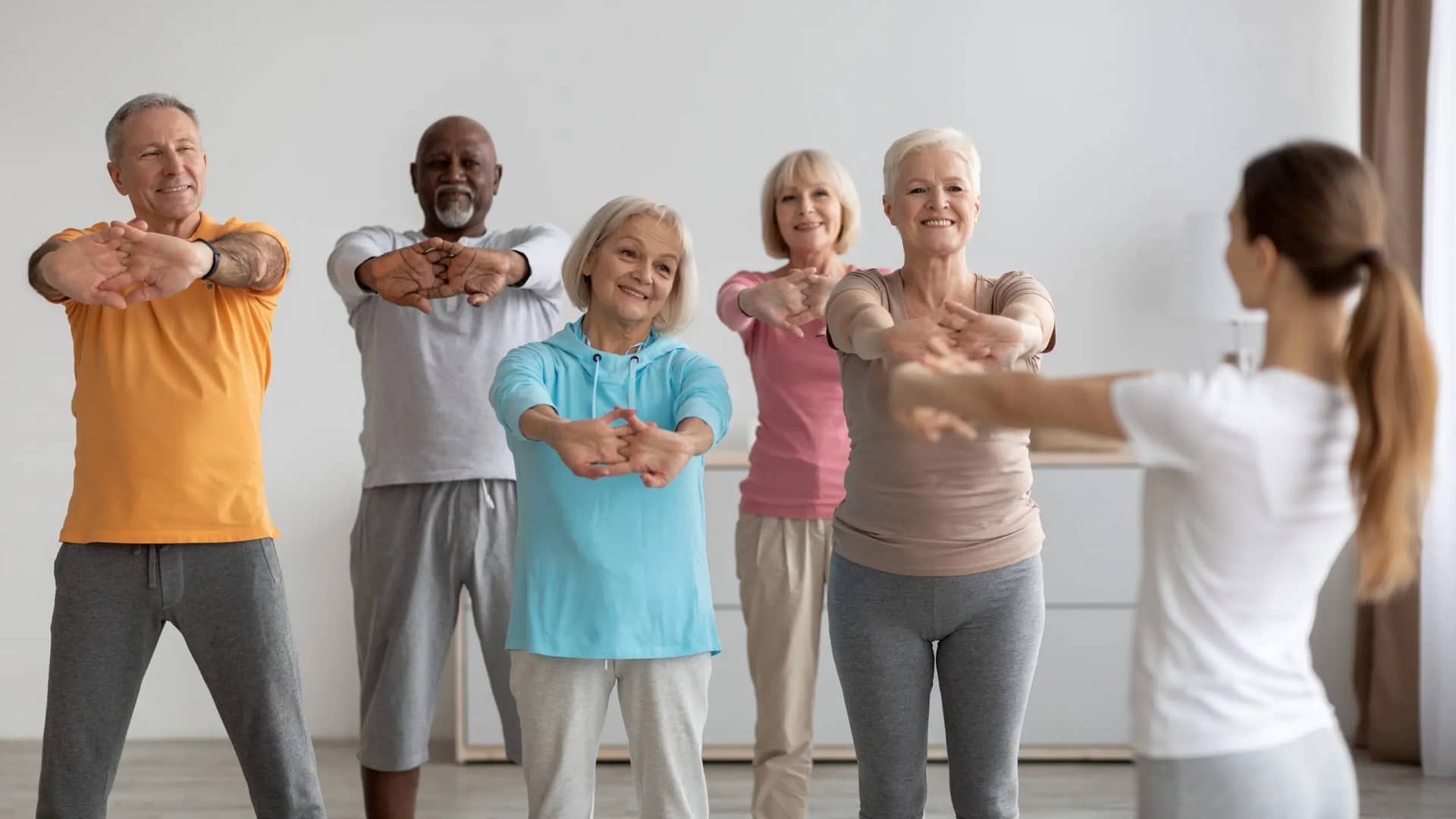Senior Fitness: Safe and Effective Routines for Older Adults
As we age, staying physically active becomes increasingly important for maintaining our health and well-being. Regular exercise can help older adults stay independent, reduce the risk of chronic diseases, and improve overall quality of life. However, it’s essential to approach fitness for seniors with care and consideration for their unique needs and limitations. In this article, we’ll explore safe and effective fitness routines tailored specifically for older adults.
The Importance of Senior Fitness
- Promoting Independence
Maintaining functional independence is a top priority for many seniors.
- Reducing Chronic Disease Risks
Chronic conditions like heart disease, diabetes, and osteoporosis become more prevalent with age. Fortunately, a well-structured fitness routine can mitigate these risks.
- Enhancing Mental Well-Being
Regular physical activity releases endorphins, which can reduce symptoms of depression and anxiety.
Designing a Safe Senior Fitness Routine
Before starting any exercise program, seniors should consult with their healthcare provider to ensure it’s safe for their specific health conditions. Once cleared, the following components should be incorporated into a well-rounded fitness routine:
- Cardiovascular Exercise
Cardiovascular exercises, such as brisk walking, swimming, or cycling, are essential for maintaining heart health and stamina. Seniors should aim for at least 150 minutes of moderate-intensity aerobic activity each week, or as recommended by their doctor.
- Strength Training
Strength training helps seniors maintain muscle mass and bone density. Simple bodyweight exercises, resistance bands, or light weights can be used. Focus on all major muscle groups, including legs, arms, chest, back, and core.
- Flexibility and Stretching
Flexibility exercises can improve joint mobility and reduce the risk of injury. Yoga and tai chi are excellent options for seniors, as they incorporate gentle stretching and balance work. Stretching should be done daily to maintain or improve range of motion.
- Balance Training
Balance becomes more challenging with age, increasing the risk of falls. Balance exercises, like standing on one leg or walking heel to toe, should be integrated into the routine. Consider participating in balance-focused classes offered at local gyms or community centers.
- Proper Nutrition
A healthy diet is a vital component of senior fitness. Seniors should aim for a balanced diet rich in fruits, vegetables, lean proteins, and whole grains.
- Rest and Recovery
Seniors may require more time for rest and recovery between workouts, Listen to your body and don’t overexert yourself.
Sample Senior Fitness Routine
Here’s a sample weekly fitness routine tailored for seniors:
Day1: Cardiovascular Exercise
- 30 minutes of brisk walking
- Gentle stretching routine
Day2: Strength Training
- Bodyweight squats (2 sets of 10)
- Wall push-ups (2 sets of 10)
- Seated leg raises (2 sets of 10)
- Light dumbbell curls (2 sets of 10)
- Planks (2 sets of 20 seconds)
- Gentle stretching routine
Day3: Rest and Recovery
Day4: Cardiovascular Exercise
- 20 minutes of swimming or water aerobics
- Gentle stretching routine
Day5: Balance and Flexibility
- Tai chi or yoga class
- Gentle stretching routine
Day6: Strength Training
- Bodyweight lunges (2 sets of 10)
- Resistance band rows (2 sets of 10)
- Seated leg extensions (2 sets of 10)
- Light dumbbell lateral raises (2 sets of 10)
- Seated knee extensions (2 sets of 10)
- Gentle stretching routine
Day 7: Rest and Recovery
Senior fitness is not only achievable but also essential for maintaining a high quality of life as we age. By incorporating cardiovascular exercise, strength training, flexibility work, balance training, and proper nutrition into their routines, older adults can enjoy improved health, independence, and overall well-being. Remember always to consult with a healthcare provider before starting a new fitness program and to listen to your body, making adjustments as needed. Age is just a number, and with the right approach, seniors can continue to thrive through fitness.















Leave a Reply